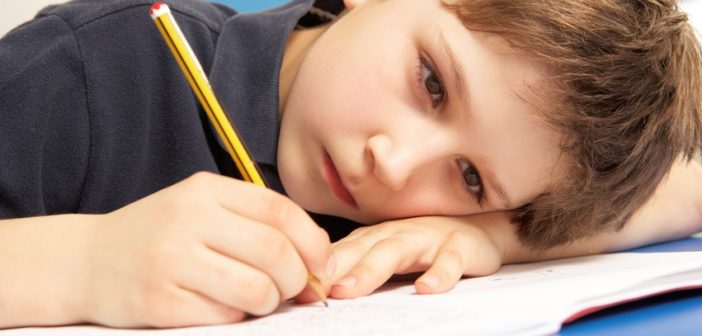This Post Was Written By School Mum Contributor Renée Meier
It’s no secret kids need to move to learn and grow. So why should they be expected to sit still in a classroom for long periods of time without fidgeting or moving about? This must be tough for even the most neurotypical child, yet this is also often expected of kids who struggle with attention and learning disorders.
Research increasingly shows that movement breaks throughout the school day help improve children’s ability to concentrate. In fact, movement has been proven to help build neural pathways and strengthen the brain, just like other muscles in the body. Physical activity also increases oxygen to the brain and improves circulation, which in turn boosts attention and focus.
Movement that develops gross motors skills helps children with a range of everyday functions such as posture, spatial awareness, carrying their school bag, playing sport and overall coordination.
Development of fine motor skills can assist with pencil grip and strength for writing, cutting, typing, tying shoelaces and other skills involving hands and fingers.

In Australia, the national curriculum for primary schools currently has a Fundaments Movement skills component which:
“…provide the foundation for competent and confident participation in a range of physical activities such as games, sports, dance, gymnastics and physical recreation.” Australian Curriculum v8.3
However, this is only covered in the Health & Physical Education, a small element of a child’s school week and does not focus on movement as a way of enhancing capacity to learn.
It is therefore entirely dependent on schools and individual teachers as to whether movement is incorporated into daily class routines.
Teachers are increasingly turning to resources such as Go Noodle, a free online program with songs, stretches, jumping and yoga moves, to incorporate movement in classrooms. They use programs like this to help improve cognition, while developing gross and fine motors skills in their students. These movement interludes are often called “brain breaks”.
A recent study was undertaken in Australia to ascertain the value of structured movement breaks and activities in the classroom. The study concluded that integrated movement-based activities can help improve students’ concentration, enjoyment of lessons, engagement in learning and interpersonal relationships with their peers and with their teacher (Nalder and Northcote, 2015). Both teachers and students participating in the study reported the benefits of the movement-based activities, and this was also reflected in improvements in test scores.

This study recommended further exploration of gender differences in regards to the benefits. Science already tells us boys’ and girls’ brains develop differently. Higher levels of serotonin and oxytocin mean girls are often able to sit for longer periods of time. Boys’ brains on the other hand, are better wired to learn through movement and visual experiences. Which suggests boys in particular will respond better in learning environments if their need to move is fulfilled.
As a mother of two very active boys, this is certainly my experience. Sitting for prolonged periods working on homework has been a struggle in the past. Armed with information on movement and cognition, I now let them play a game of basketball or handball before we get started. Providing this physical outlet between school and homework has made a huge difference in my boys’ attitude and ability to get through their work.
With increasing pressure on schools to produce results through standardised testing, mainstreaming of students with special needs and the increase in diagnosis of learning and attention disorders, it is clear a shift in the way education is delivered in classrooms is due.
Based on the evidence, it is remarkable that movement based activities are not already a mandatory component of all classroom routines to ensure our children’s capacity to learn is maximised.
Reference
Nalder, Melissa and Northcote, Maria T. (2015) “The Impact of Integrated Movement-Based Activities on Primary School Aged Students in the Classroom,” TEACH COLLECTION of Christian Education: Vol. 1 : Iss. 1 , Article 1.
Available at: https://research.avondale.edu.au/teachcollection/vol1/iss1/1


2 Comments
Pingback: The Downsides To Reward & Behaviour Charts In Schools - School Mum
Pingback: It Really Is This Simple To Build Resilience and Self-Confidence In Your Kids - School Mum